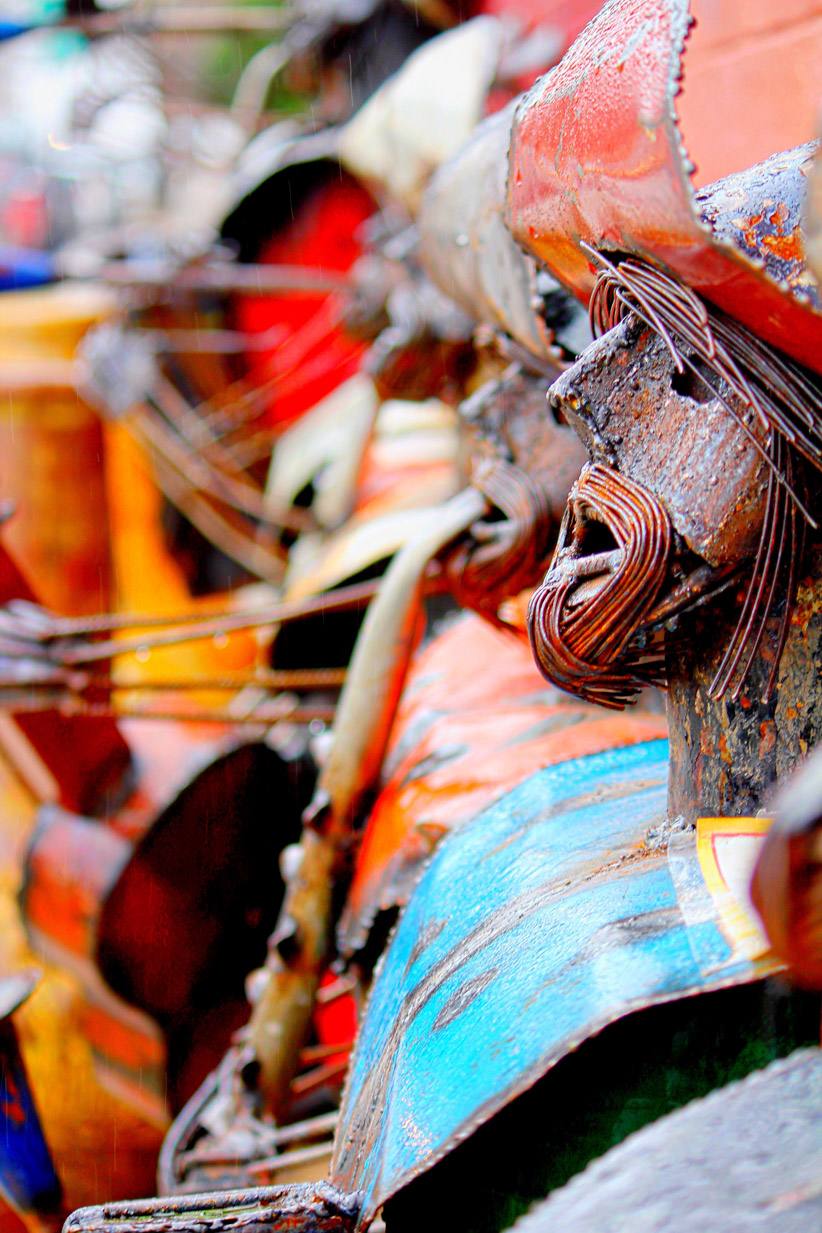

 ©John Yerkes
©John Yerkes
Chapter 3:1-11 (ESV) - “Then we turned and went up the way to Bashan. And Og the king of Bashan came out against us, he and all his people, to battle at Edrei. But the Lord said to me, ‘Do not fear him, for I have given him and all his people and his land into your hand. And you shall do to him as you did to Sihon the king of the Amorites, who lived at Heshbon.’ So the Lord our God gave into our hand Og also, the king of Bashan, and all his people, and we struck him down until he had no survivor left. And we took all his cities at that time—there was not a city that we did not take from them—sixty cities, the whole region of Argob, the kingdom of Og in Bashan. All these were cities fortified with high walls, gates, and bars, besides very many unwalled villages. And we devoted them to destruction, as we did to Sihon the king of Heshbon, devoting to destruction every city, men, women, and children. But all the livestock and the spoil of the cities we took as our plunder. So we took the land at that time out of the hand of the two kings of the Amorites who were beyond the Jordan, from the Valley of the Arnon to Mount Hermon (the Sidonians call Hermon Sirion, while the Amorites call it Senir), all the cities of the tableland and all Gilead and all Bashan, as far as Salecah and Edrei, cities of the kingdom of Og in Bashan. (For only Og the king of Bashan was left of the remnant of the Rephaim. Behold, his bed was a bed of iron. Is it not in Rabbah of the Ammonites? Nine cubits was its length, and four cubits its breadth, according to the common cubit.)
Question to consider: Why do you think Moses pointed out the size of Og’s bed?
After describing the destruction of the Amorites under Sihon the king of Heshbon, Moses turned to the battle against Og the king of Bashan. While Sihon believed that the high walls of his cities would be able to stand up under the onslaught of the Israelites, Og not only had heavily fortified cities, but they were giants referred to as the Rephaim. The Rephaim were first mentioned in Genesis 14:5, and the name literally means “terrible ones”.
A cubit was about a foot and a half so the description of Og’s bed at 9 by 4 cubits would have been about twelve feet long and six feet wide. I don’t think Moses mentioned this to let us know he had an impressive bed to sleep on but that Og was a size able to utilize a twelve foot bed.
Like the Nephilim, there are a number of people who think that the Rephaim were some kind of demi-god, angelic-human hybrid. I encourage you to read through my study on Genesis 6:1-8. The line of Jacob was actually rather small in stature. King David was the least of his brothers and not even considered to be brought before Samuel. Rather than sending him out for battle against the Philistines, his father thought he was only good for tending sheep. Ones like the Nephilim and Rephaim were bred to be warriors. They considered themselves gods among men because they were built for war and could wield their power however they chose.
It’s unfortunate that Og was this way, for had he been a smaller man, he might have learned to fear the God of Israel. Instead, God used Israel as His sword to bring destruction to sixty cities which completed the destruction of the Amorites and added to the wealth of Israel.
Dear heavenly Father, help us to trust in You and not the strength of our hands or the size of our worldly estates. For what good is it to gain the whole world and never know You or be a part of Your family? We look forward to the day when there is no more war or destruction. Come Lord Jesus! Amen.